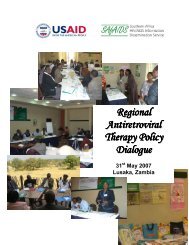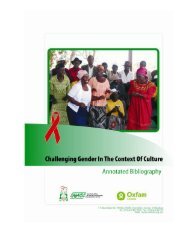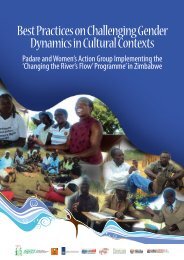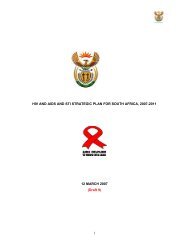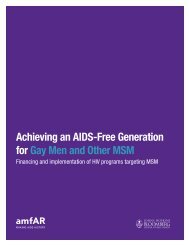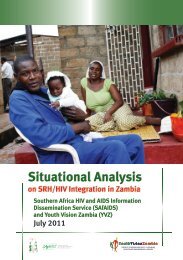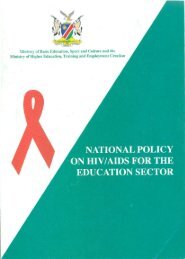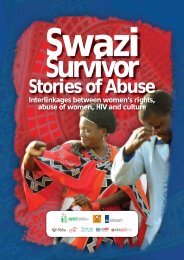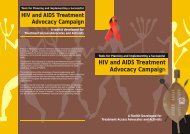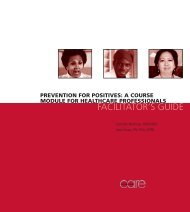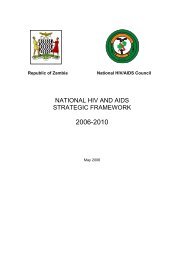Implementation of regional and international HIV prevention - SAfAIDS
Implementation of regional and international HIV prevention - SAfAIDS
Implementation of regional and international HIV prevention - SAfAIDS
- No tags were found...
You also want an ePaper? Increase the reach of your titles
YUMPU automatically turns print PDFs into web optimized ePapers that Google loves.
3.0 OVERVIEW OF THE <strong>HIV</strong> AND AIDS SITUATIONThis section sheds light on the extent <strong>of</strong> the <strong>HIV</strong> <strong>and</strong> AIDS crisis in the two countries. Swazil<strong>and</strong><strong>and</strong> Zambia may be geographically relatively close, yet the social, political <strong>and</strong> cultural settingsindicate differences that determine how the epidemic may have been managed.3.1 Overview <strong>of</strong> the <strong>HIV</strong> <strong>and</strong> AIDS situation in Swazil<strong>and</strong>3.1. 1 ContextDemographic information shows that Swazil<strong>and</strong> is one <strong>of</strong> the southern African countries witha low population <strong>of</strong> just about 1,141,000 in 2007. The annual growth rate is about negative four,indicating that the country has not been growing or that the population is decreasing, partlydue to deaths that are mainly caused by AIDS. Life expectancy at birth is estimated at 42 yearswhile in every 100,000 births 112 children die. See the fact sheet below:Table 1: Demographic Facts for Swazil<strong>and</strong>Demographic Facts for Swazil<strong>and</strong>Demographic Data Year EstimateTotal Population 2007 1,141,000Population aged 15 - 49 2007 582,000Female population aged 15-24 2007 143,000Annual population growth 2005 - 2010 -0.4Maternal mortality ratio (100,000 live births) 2005 390Life expectancy at birth 2006 42Under 5 mortality rate (100,000 live births) 2006 164Infant mortality ratio (100,000 live births) 2006 42Infant mortality (100,000 live births) 2006 112Under 5 mortality rate (100,000 live births) 2006 164Source: WHO/UNAIDS/UNICEF Epidemiological Fact Sheet on <strong>HIV</strong> <strong>and</strong> AIDS Swazil<strong>and</strong> update Report 200818UNGASS <strong>and</strong> DHS reports also show that women (31%) are more likely to be <strong>HIV</strong> positive thanmen (20%). The <strong>HIV</strong> <strong>and</strong> AIDS situation has worsened over the years since the first reportedAIDS case in 1986. This, as reported by the GoS, is attributed to the unwillingness <strong>of</strong> the Swazipopulation to change their sexual behaviour (National Multi-sectoral <strong>HIV</strong> <strong>and</strong> AIDS PolicyDocument, 2006).The practice <strong>of</strong> multiple concurrent casual heterosexual partners which is predominant inSwazil<strong>and</strong> is mainly responsible for the spread <strong>of</strong> <strong>HIV</strong> 2. Between 1992 <strong>and</strong> 2004, an increase (3.9%to 42.9%) in the percentage <strong>of</strong> women who tested <strong>HIV</strong> positive was registered. Although resultsfrom the Sentinel Surveillance Report 2004 showed that this figure had slightly reduced to 39.2%,it is still one <strong>of</strong> the highest prevalences among women in the world, <strong>and</strong> researchers concurredthat this did not mean a decline in prevalence, but merely increased accuracy in estimation.



